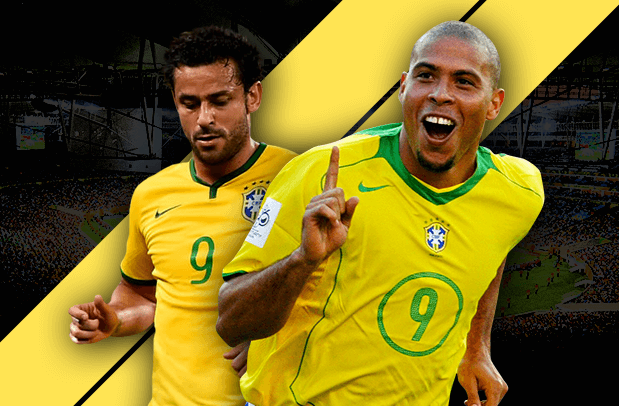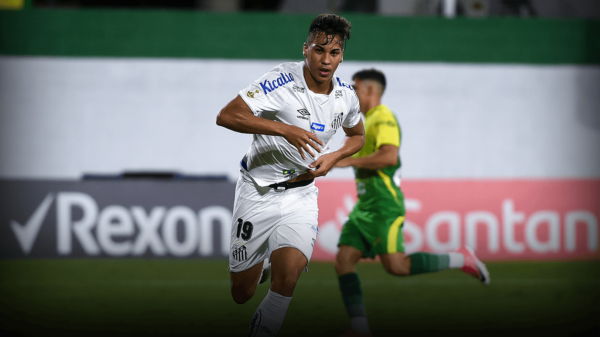On the back of their Copa America Centenario exit, Subhagata Bhattacharya writes about Brazil’s decline and the various factors behind it.
Once upon a time (as most fairy tales begin) not so long ago, the world was in awe of the quick feet passing, free scoring and the ever beautiful style of the Brazilian side. The only motto for the Brazil football team was to entertain people globally with its footballing skills. Many generations of football players have graced the yellow and green jersey representing their nation at the world stage and have certainly taken the world by storm. Today, Brazilian football is at a low ebb. The “golden team(s)” was never going to be an easy reputation to live up to.

The Selecao are now a shadow of their former selves – a side who prided themselves in playing and winning the beautiful game in a beautiful way. The Brazilian squad of today is filled with some of the most exciting talents from the world of football much like the team that won the 2002 World Cup in South Korea and Japan. Players like Pele, Ronaldo, Rivaldo, Roberto Carlos, Dunga, Kaka, Ronaldinho et al have spread joy through time, but this Brazil team fails to make the cut. The exciting youngsters of today seem to be more of an Achilles heel due to their lack of experience for the national team.
However, the lack of experience shall no longer be used as an excuse for the disappointing performances of the Selecao. They were knocked out in a humiliating way by Germany in front of home fans in the 2014 World Cup Semis. Their dismal performances did not stop even after that as the very next year they suffered an early exit at the Copa America 2015 losing once again to Paraguay on penalties (a repeat of the 2011 Copa America). That is when one would think that the Brazil team could not sink any further, but unfortunately it was not the case. The Brazil fans have been left completely disheartened by the group stage exit at the Copa America Centenario 2016 losing to minnows Peru this year.
Some critics might point out the fact that the Brazil team that showed up for the Copa America Centenario 2016, was a far more weaker side as key players were rested for the Olympic Games in Rio. But does that justify the once mighty Brazil failing to even make it to the knockout stages of a major tournament? No, I don’t think so.
So, what has gone so wrong for Brazil in the recent past that their performance at the international stage is on a constant decline? What happened to the days of “Joga Bonito”?
When a team performs poorly, the critics are quick to raise eyebrows on almost every aspect of the sport that concerns the team.
Sponsors instead of selectors
As the performances dropped, the first lot of allegations to hit the team’s way was that of the selection criteria. Brazil have performed rather poorly since their 2002 World Cup win, exiting in the quarter final stage of both 2006 and 2010. But they were never questioned for their playing style nor humiliated on the pitch the way Germany did to them in the semi final of the 2014 World Cup and it was further aggravated by the Dutch who found Brazil’s weak spot in the third place play off.
That semi final loss to Germany turned out to be the “darkest day” in Brazilian football history. Goal after goal with the whole world watching and most hoping for a comeback, but there was none.
The allegations that Brazil team has been picked by its sponsors rather than selectors came into existence after a Sao Paulo newspaper brought up the claim, and further went on to say that it has been practiced since the 2006 World Cup. Only players that are “marketable” rather than equipped or qualified are picked and a few players shall be involved in each and every international fixture for Brazil.
Domestic Struggles
Brazil’s domestic football league is a major contributing factor to the weakness. The league has adopted an export model grooming youngsters and selling them for sufficient transfer fees that help keep the clubs afloat in Brazil. Selecao’s domestic talents have also been widely regarded as the weak links in the national team as compared to the more marketable and steady talents playing their regular football in Europe.
The ones who opt to become professionals in Brazil face further troubles and the Brazilian league calendar is one such area of crisis. Players at big clubs often have to play more than once a week and often on poorly prepared pitches, while those at relatively smaller clubs may only have matches for a couple of months in a year.
The success of the Samba boys is an important issue, especially considering it as a great asset for the country, a brand recognized and loved around the world. The problems have been growing, but Brazil have often been able to fall back on their pool of natural footballing talent to pull them through the difficult times. But, not this time. These players as individuals are quite remarkable but have failed to perform as a team.
Exporting Talents
Lack of domestic talents has never been a problem, in spite of exporting talented youths to European clubs year after year. In 2014, according to FIFA, Brazil was the most active country in the international transfer market, with 646 incoming moves and 689 outgoing deals.
Tostão, a World Cup winner in 1970 and now a prominent columnist in Brazil said “Brazilian football has been suffering from a sickness for some time,” he mused in Folha de São Paulo. “To treat it, we need a group of independent specialists who are given time. The first task should be to make the patient face reality, to put an end to the lie that Brazil produces world-class players on every street corner.”
Many would believe Brazil still has the personnel, but it is all about creating the aura that surrounded them. Now, Brazil only needs to start getting rid of the failure tag that has been put on them in recent years. The mentality of winning needs to be restored, they promise a lot and year after year and tournament after tournament they fail to deliver.
All in all Brazil’s domestic struggles are largely caused due to the fact that they are constantly exporting whatever talent they have in their domestic circuit. The players that fail to make their mark are left behind on many aspects of their footballing development as compared to those who play regularly in Europe. And not just that, Brazil has most of its players scattered across different leagues and clubs that play completely different style of football and these players only get a chance to sync with each other while playing for their nation.
Safety-first Football
Brazil’s desperation to play the game beautifully has turned into desperation for winning and that is where they are required to practice safety-first and beauty next. This is quite opposed to the style of play they are generally used too, but the lack of job security of the coaches often tends to incorporate this in order to win. However, that has not been successful in recent years as is clearly noticeable.
The Brazilian midfield contains names easily recognizable in world football and like any team’s midfield their function is to create moves and harmonize the team; however it has been quite the opposite for the Selecao. The midfield divides the side into two units speaking different languages and often finds themselves forced to communicate without the likes of an interpreter.
What next for Brazil?
These troubles coupled with the unthinkably poor performances from the Brazil national team have hurt their fans the most, who stuck with the team through thick and thin. The game in Brazil stands broken to an extent where one might have to wonder whether they can make it to Russia 2018 without sweating- after all would anyone rate them as good as Argentina or Chile among the South American teams?
The yellow and green army will always be compared to their former glories. Perhaps the best among Brazil’s pool of talents Pele, who has been an ambassador for Brazilian football, is also reflective of their erstwhile god like status in world football. The self-proclaimed and to a large extent proven in the past “Land of Football” is now facing a series of challenges to its status as world’s leading football powerhouse.
Maybe, it is time for “Christ the Redeemer” to come and rescue Brazil’s fortunes ahead of the Olympics and later in the World Cup Qualifiers.
Written by Subhagata Bhattacharya
- What went wrong for Brazil? - July 12, 2016
- Rivals: East Bengal vs Mohun Bagan | The intense clash in the City of Joy - April 19, 2016
- Can Arsenal Avoid The Collapse This Season? - February 18, 2016


























































